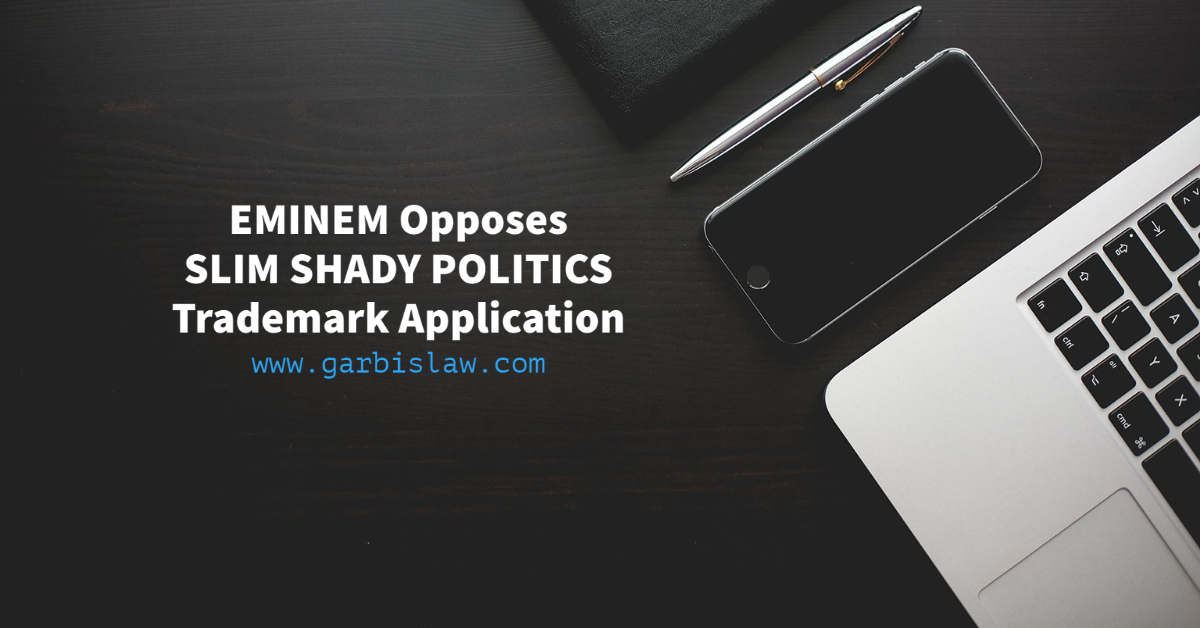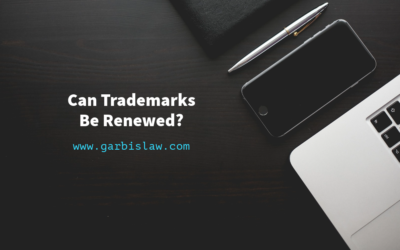Marshall Mathers III, more commonly known as the rapper Eminem, has filed a trademark opposition against individuals Melissa More and Alan Hoffer. On February 12, 2021, they filed a trademark application with the United States Patent and Trademark Office (“USPTO”) for SLIM SHADY POLITICS for an “internet website featuring news and information in the field of national and international politics.”
What is a Trademark Opposition?
When a trademark application is filed with the USPTO, it gets assigned to an Examining Attorney who reviews the application to determine if it should be allowed to proceed to registration. If approved by the Examining Attorney, the next step of the process is a publication/opposition period, where third parties have a 30 day window to oppose the application if they feel they will be damaged by the issuance of the registration.
Attorneys for Eminem filed the opposition on November 15, 2021.
Grounds for Opposition
In addition to EMINEM, Mathers is also internationally known as SLIM SHADY and owns a number of trademark registrations covering a variety of goods and services under the SLIM SHADY name:
- SLIM SHADY – Reg #2667895 (entertainment services – live musical performances)
- SLIM SHADY – Reg #2641856 (musical sound recordings)
- SLIM SHADY – Reg #2626305 (clothing)
According to the opposition, “by virtue of the use and promotion of the mark SLIM SHADY for 25 years, the extensive use of the name and mark SLIM SHADY and the sale and promotion of SLIM SHADY goods and services, SLIM SHADY has come to be recognized as identifying goods and services finding their origin exclusively in or otherwise uniquely associated with Mathers, is distinctive of Mathers’ goods and services, and has come to represent the enormous goodwill of Mathers.”
Mathers has opposed the SLIM SHADY POLITICS mark under two counts:
- Likelihood of Confusion; and
- Trademark Dilution
Likelihood of Confusion
Mathers believes that the mark SLIM SHADY POLITICS is likely to cause confusion, mistake or to deceive as to the source of origin of the Applicants’ services by causing the consuming public to believe that the Applicants’ services are sponsored, licensed and/or otherwise approved by, or in some way connected or affiliated with the Opposer.
In order to determine if there is a likelihood of confusion between two marks, a multi-factor analysis is performed. These factors were laid out in the case In re E. I. du Pont de Nemours & Co., 476 F.2d 1357, 177 USPQ 563 (C.C.P.A. 1973) and listed below:
- The similarity or dissimilarity of the marks in their entireties as to appearance, sound, connotation and commercial impression.
- The similarity or dissimilarity and nature of the goods or services as described in an application or registration or in connection with which a prior mark is in use.
- The similarity or dissimilarity of established, likely-to-continue trade channels.
- The conditions under which and buyers to whom sales are made, i.e. “impulse” vs. careful, sophisticated purchasing.
- The fame of the prior mark (sales, advertising, length of use).
- The number and nature of similar marks in use on similar goods.
- The nature and extent of any actual confusion.
- The length of time during and conditions under which there has been concurrent use without evidence of actual confusion.
- The variety of goods on which a mark is or is not used.
- The market interface between applicant and the owner of a prior mark.
- The extent to which applicant has a right to exclude others from use of its mark on its goods.
- The extent of potential confusion.
- Any other established fact probative of the effect of use.
These “DuPont Factors” aren’t necessarily given even weight and the analysis varies on a case by case basis, but the similarity of the marks in their entireties is typically a key factor.
Trademark Dilution
Trademark dilution is the unauthorized use of and/or application for a trademark that is likely to weaken the distinctive quality of or harm a famous mark. Dilution falls into two categories: blurring and tarnishment.
Dilution by “tarnishment” occurs when the reputation of a famous mark is harmed through association with another similar mark or trade name. This typically occurs when the infringing mark is used in a negative light or if the infringer links it to products of low quality. Dilution by “blurring,” which is what we are dealing with here, occurs when the distinctiveness of a famous mark is impaired by association with another similar mark or trade name. Regardless of the type of dilution, the first requirement is that the mark must be famous.
To be considered “famous,” a trademark must be recognizable to the general public. Here, it is pretty safe to say that SLIM SHADY has reached that level thanks to the exclusive and extensive use of the mark, the amount of media coverage, and the sales and promotion of goods and services under the SLIM SHADY name.
Accordingly, Mathers argues that “registration of the mark SLIM SHADY POLITICS to Applicant inevitably will call to mind SLIM SHADY and would therefore dilute and/or would likely dilute Opposer’s mark SLIM SHADY by impairing the distinctive quality of Opposer’s mark SLIM SHADY to uniquely identify Marshall Mather’s goods and services.
The Applicants have until 12/25/2021 to file a response to this trademark opposition. Failure to respond will lead to abandonment of their trademark application.





